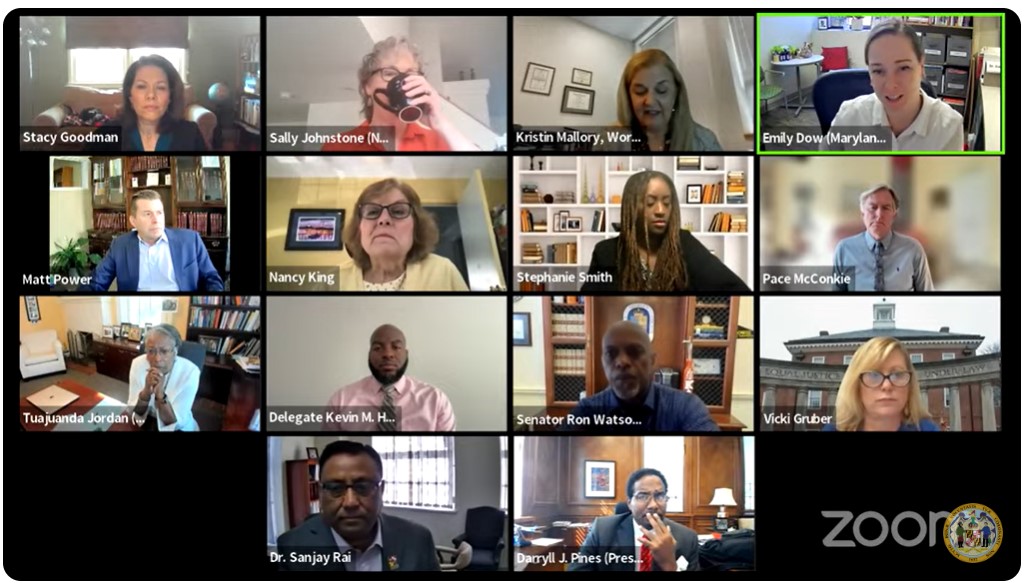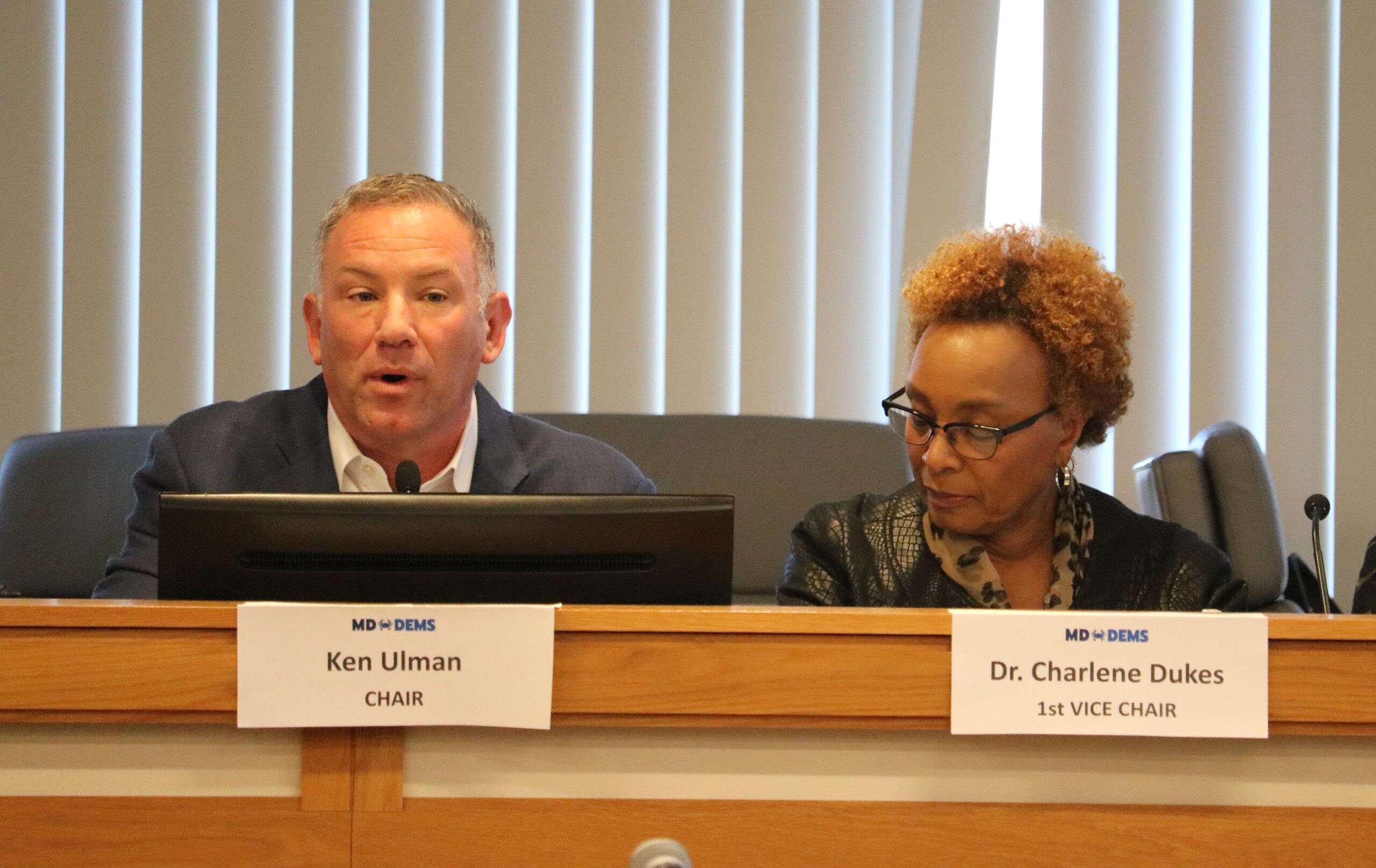What’s in a mission statement? Workgroup considers reforms that could influence degree approvals

A legislative work group created to recommend policy changes to the degree approval process reviewed a few recommendations Tuesday, with some of the focus on the mission statements that guide Maryland’s colleges and universities.
The statements are usually a few words or sentences and summarize the general values or an objective at a particular college or university.
Emily Dow, assistant secretary of academic affairs for the Maryland Higher Education Commission, said the agency reviews each institution’s mission statement and determines whether it conforms to the state’s broader higher education plan.
Statutory distinctions are made between each public institution, Dow said, such as community colleges providing technical and career education programs, as well as training in fields of study focused to a particular region’s business community. Those schools also offer “lower level undergraduate courses, in accordance with credit transfer guidelines set by the [commission], for students who aspire to continue their education at a senior institution.”
Each school also outlines its particular mission. For example, Morgan State University is designated as “the state’s preeminent public urban research university” that provides research and graduate study in the Baltimore area.
The National Center for Higher Education Management System based in Boulder, Colorado, recommends that Maryland change its law to require schools to switch from a traditional mission statement to an “operational” mission statement.
For example, it would include stating what students a college or university seeks to serve, what programs are offered and what “special features” it offers such as whether it’s a “minority serving institution,” emphasizes research or other factors.
Pace McConkie, a professor at Morgan State and member of the work group, said programs can flow from a mission statement. He then asked what is the difference between traditional and “operational” mission statements.
“I’m not sure that mission statements…drive program development at most colleges and universities,” said Sally Johnstone, president emerita of the national center. “It’s not that mission statements are driving program development, or that programs in place would drive a mission statement, per se, but it does give each institution the opportunity to differentiate itself.”
Johnstone said a different approach to mission statements could help smooth issues with the state’s higher education degree approval process, which the center recently analyzed for potential reforms. One issue with the current process is that MHEC relies on objections to determine whether new degree programs are unnecessarily duplicative of existing programs in the state. The adversarial nature of the process can create mistrust among the state’s higher education institutions, particularly for historically Black colleges and universities. Morgan State recently challenged the commission’s controversial decision to allow a new business analytics program at Towson University, which was ultimately withdrawn after an extended challenge.
“In the context of the state of Maryland, where you have statutory requirements for program approval through impact, there needs to be a way in which MHEC can do that much less arbitrarily and much less confrontationally than is the case right now,” Johnstone said.
The national education center also recommends Maryland approve mission statements every two years, versus the current four-year process.
In other states, the timeframe ranges between two to six years.
State comparisons
Sen. Ron Watson (D-Prince George’s) asked how other states handle program duplication.
Several analysts with the state Department of Legislative Services said their data only summarize which states mandate that higher education institutions’ mission statements clear an approval process and which do not. Nine states have approval processes similar to Maryland, but Delaware, North Carolina and Washington require no agency approval.
The California legislature approved legislation two years ago to allow the state’s community colleges to offer 30 bachelor’s degree programs annually. However, the California law stipulates that all of the state’s 116 community colleges can only establish a program in their community or region if “unmet workforce needs” are evident there. In addition, a program cannot offer a program already established by the University of California or California State University system.
A report released in April by the Civil Rights Project at UCLA concluded that more Black and Latino students could enroll in four-year, bachelor’s degree programs if those programs were offered at community colleges. The document notes some students aren’t able to attend a four-year university due to high cost of tuition, inadequate counseling to transfer, family obligations, part- or full-time jobs, and other factors.
“As it stands in the early 2020s, the bachelor’s degree remains a fundamental component to economic opportunity in the United States,” according to the UCLA report. “Indeed, learning new things and engaging with diverse perspectives is inherently valuable, builds a more informed public, and creates a more vibrant democracy. Critical for policymakers, then, is ensuring equitable access to such an array of benefits – a task often constrained by long-standing structural barriers.”
Several other states such as Florida, Texas and Washington offer bachelor’s degree programs at community colleges.
But the majority of states, including Maryland, provide two-year programs at community colleges that lead to an associate degree.
The work group is scheduled to hold its third meeting online at 10 a.m. Oct. 24.
A report with a set of recommendations is due by Dec. 1.




 Creative Commons Attribution
Creative Commons Attribution